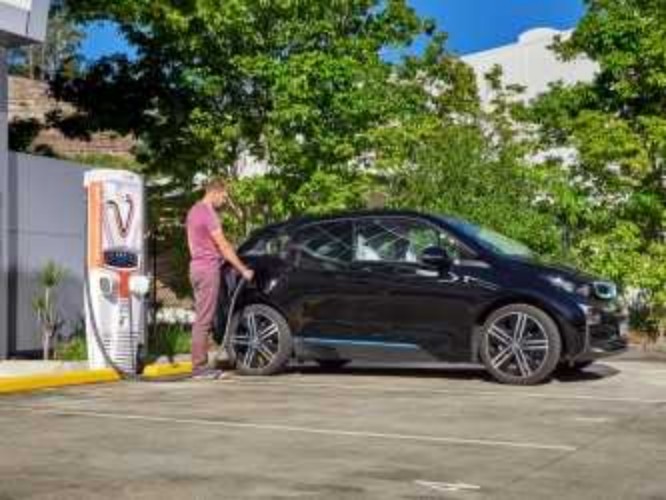Brisbane-based fast-charging company Tritium has launched its “Plug and Charge” technology, which simultaneously charges both the battery of an electric vehicle (EV) and the customer’s account. “Plug and Charge” makes charging your EV smoother than a putting surface, and just as green.
The new technology, immediately available on Tritium’s PK350kW DC High Power Chargers, irons out the creases in the charging routine. No need for bank cards or RFID tags, an EV owner simply needs to plug in and let technology do the rest – civilisation at its finest.
“This firmly and irreversibly tips the convenience scales to the recharging experience over the refuelling experience,” said James Kennedy, Chief Technology Officer and co-founder, Tritium. “It’s going to be as simple as how we charge our phones, but with the added benefit of charging our bank accounts at the same time.”
No Dramas
Normally, or at least, when approaching most EV chargers, an EV user has to sign up for that network’s system, and then manually set up a charging session. The whole process is tedious and considering we PayPass everything else in life frankly quite unnecessary.
“Plug and Charge” fixes that issue and Tritium believes the alleviation of this tedium is the removal of yet another barrier to EV adoption. “It’s taking the friction and hassle away from the experience and operators will benefit from this seamless experience,” said Kennedy. What is required for the technology to hit the critical mass required, continued Kennedy, is buy-in and adoption on a large scale from charge point operators.
Security Priority
For many, the days of being skittish about linking our bank information online are long-gone. We know there are fraudsters out there, but by Jove, we need that dill pickle lip balm! Thankfully, Kennedy assures us that Tritium’s technology “ensures we are securely storing cryptographic keys on the charger side in a way that other chargers can’t. You’re more likely to lose a card and have someone swipe it somewhere than by someone being able to access account details via our Plug and Charge technology.”
Tritium has been testing its new technology at a number of its Chargers in Germany and at its E-Mobility Innovation Centre in Amsterdam, the centre with which Tritium credits its advanced charging technology.
Charging for the Future
Tritium recorded a $50 million loss in 2019 but the innovative company says it is investing heavily in projects for the future, and by just looking at the recent form guide, it is hard to argue against their ambition.
Some of Tritium’s recent milestones include the establishment of Tritium E-Mobility Innovation Centre in Amsterdam to complement R&D carried out at its Brisbane base, recent growth in sales, success in securing growth capital, partnerships supporting growth in Europe and the US, and the opening of a US innovation, testing and manufacturing facility.
This content is protected by copyright and may not be reused. If you want to cooperate with us and would like to reuse some of our content, please contact: editors@pv-magazine.com.









1 comment
By submitting this form you agree to pv magazine using your data for the purposes of publishing your comment.
Your personal data will only be disclosed or otherwise transmitted to third parties for the purposes of spam filtering or if this is necessary for technical maintenance of the website. Any other transfer to third parties will not take place unless this is justified on the basis of applicable data protection regulations or if pv magazine is legally obliged to do so.
You may revoke this consent at any time with effect for the future, in which case your personal data will be deleted immediately. Otherwise, your data will be deleted if pv magazine has processed your request or the purpose of data storage is fulfilled.
Further information on data privacy can be found in our Data Protection Policy.